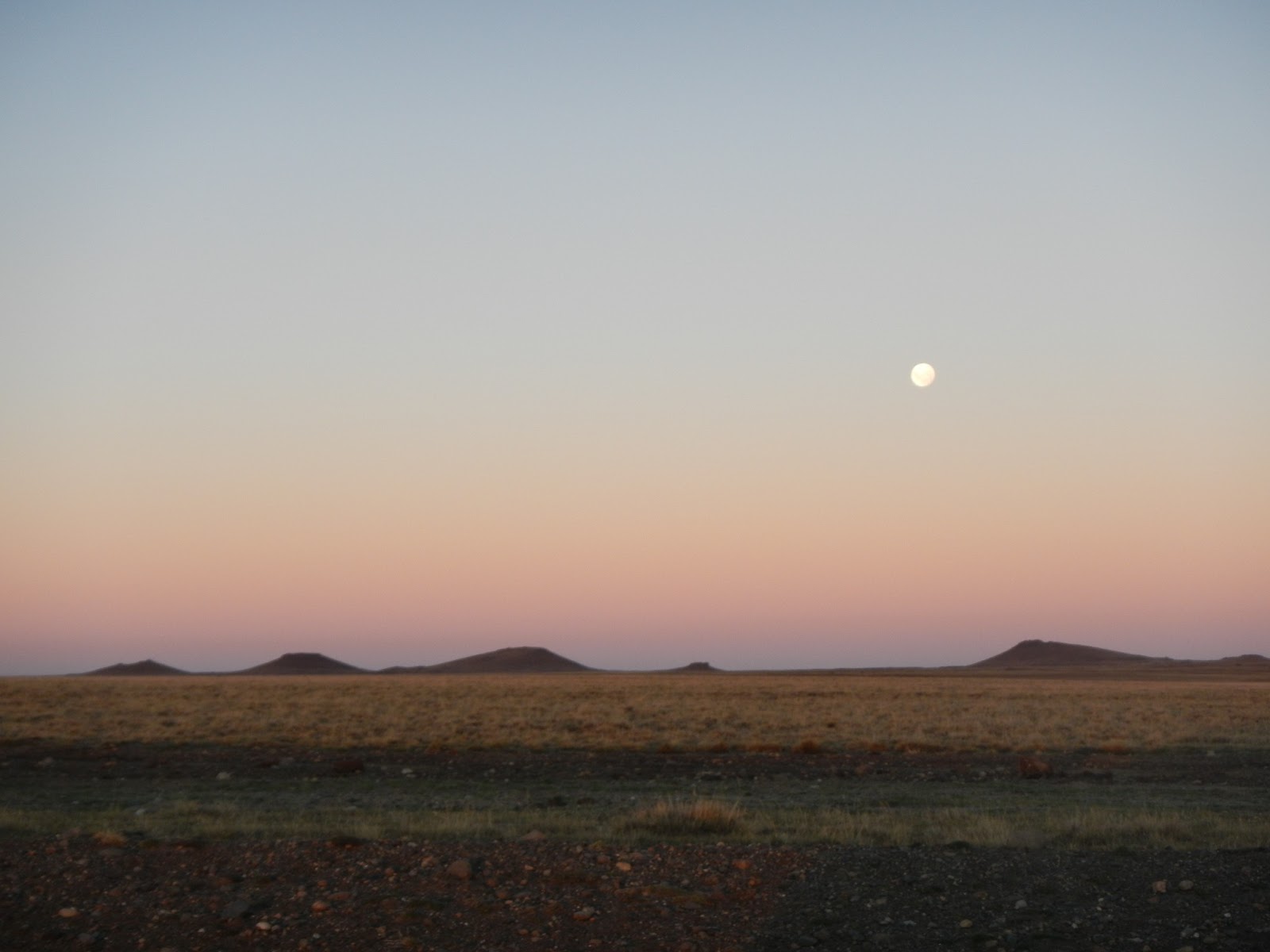Well, things are finally coming together. On Saturday night,
Andrew and I camped out at the lighthouse at Cabo Virgenes, which offers
guidance to ships about to take the Strait of Magellan to the Pacific Ocean. Heading
north from the straight, there is a roughly 60 km long continuous stretch of 50
– 20 m high cliffs that are entirely composed of glacial sediment. This is quite
possibly one of the main shining jewels of my dissertation. Previous
researchers have mapped the limits of multiple glaciations on the surface,
using topographic maps and photos taken by planes and satellites to distinguish
landforms (like moraines) that suggest the oldest glaciers extended to the
ocean, and younger ones maybe not so far. However, here at the coast, the
cliffs offer a slice into the earth, exposing the layers of sediment lain down
through time. I hope to sort out which layer belongs to which glaciation, and
maybe even say something about where along the glacier the sediment was being
deposited. Was it at the edge? Was it at the base? Were there lakes? Landslides
off the glacier face? I’ll let you know in a few years!
Me, walking along the coast (photo credit to Andrew LaCroix). These cliffs go on for 50 kilometres (that's 31 miles for you Americans :) Totally exciting.
Our hike went well. We were very lucky to have a nearly
cloudless sky, warm temperatures, and very little wind. We hiked quickly,
enjoying some exercise of both the physical and mental variety. I made a lot of
exciting observations that made it difficult to turn around at our set return
time. It’s always easy to say “well, we’ll just go around this next corner!”
Luckily, the threat of rising tides is quite effective in influencing such
decisions.
Andrew, earning his keep.
I have exciting news. My supervisor, John, and my committee
member, Rene, are now back in Rio Gallegos from their field work in the Andes,
along with our Argentine colleagues Hugo and Bettina. Hugo has some contacts
here in town, and has managed to secure the rental of two ATVs, a trailer for
them, and the use of a hut by the lighthouse at Cabo Virgenes that is owned by
the local university. Tomorrow we will check out of our hotel and drive back to
the coast, where we will spend Thursday and Friday ripping up the coast on four
wheels! That 60 km stretch of cliffs doesn’t stand a chance. I will report back
after our adventure, hopefully with lots of photos and stories of good weather
and even better science.
Until then, amigos!
Moonrise over the Cierra de los Frailes volcanoes, seen driving back to Rio Gallegos after our trek.


























